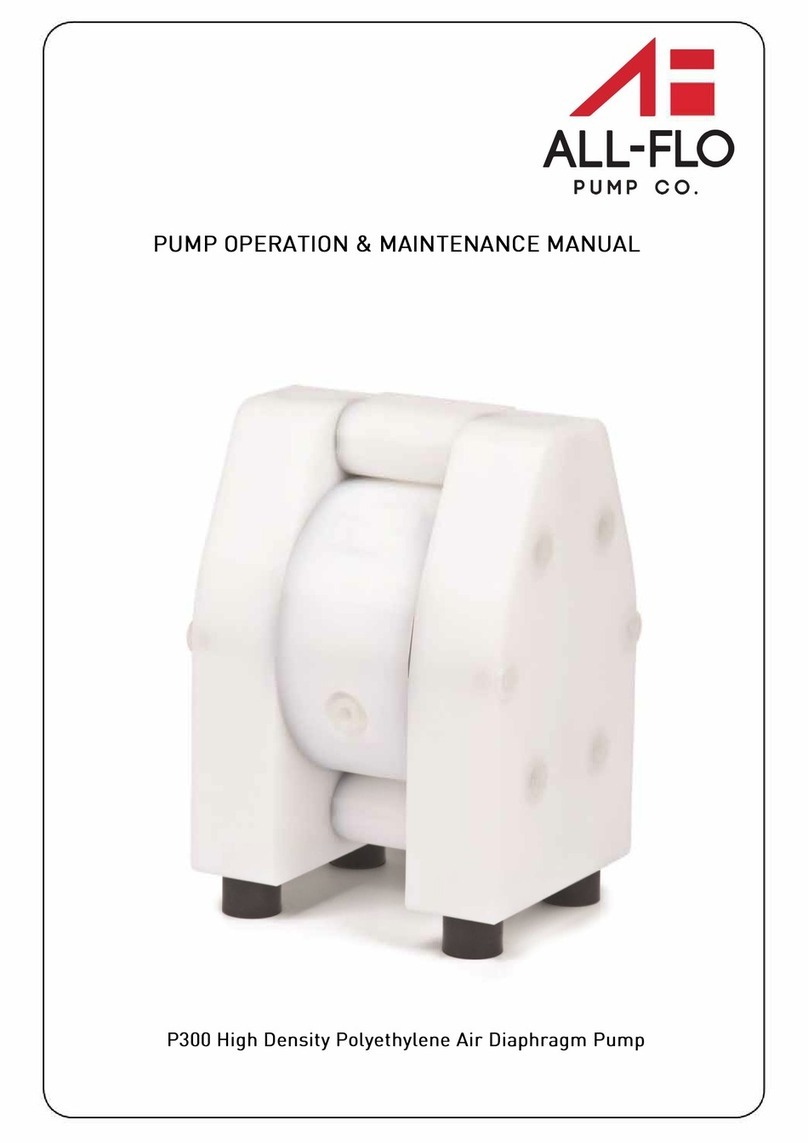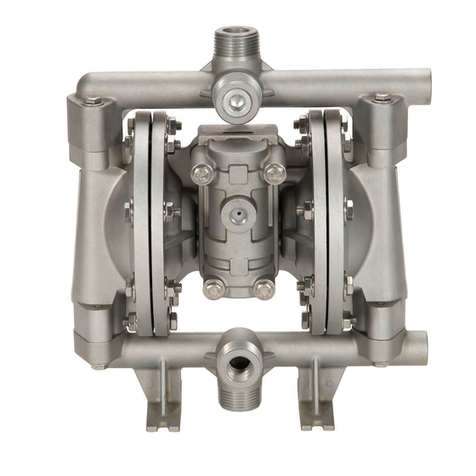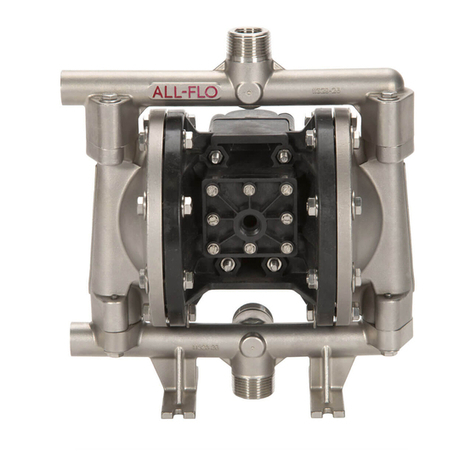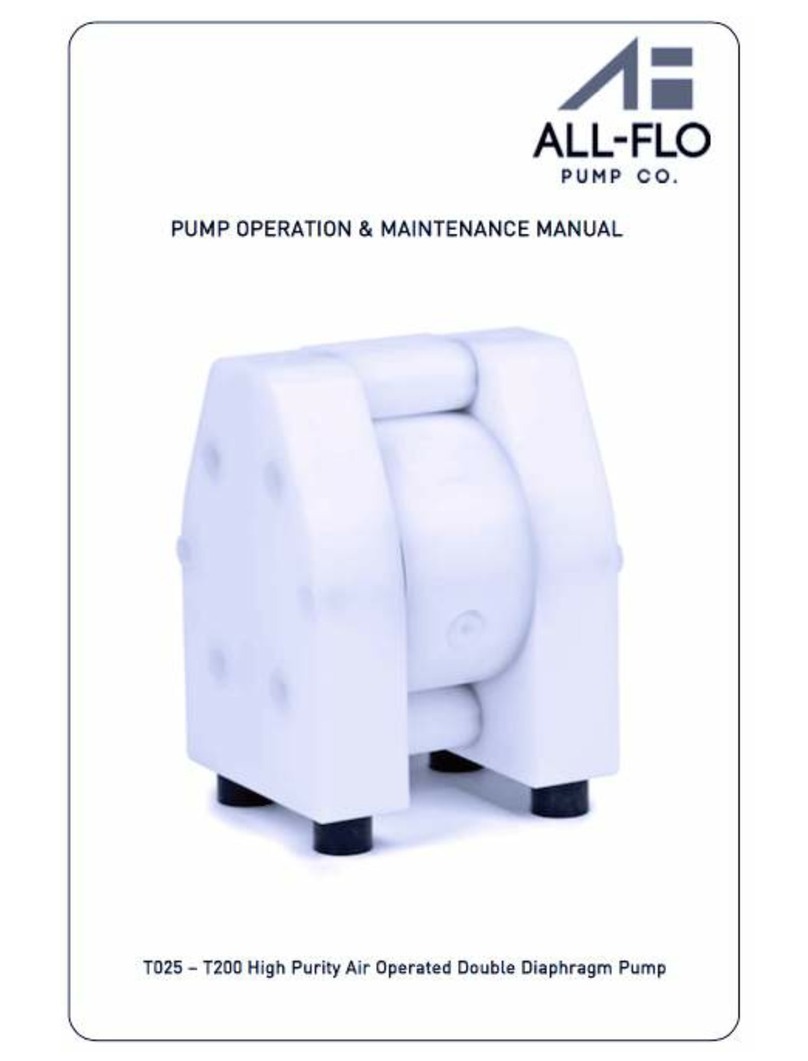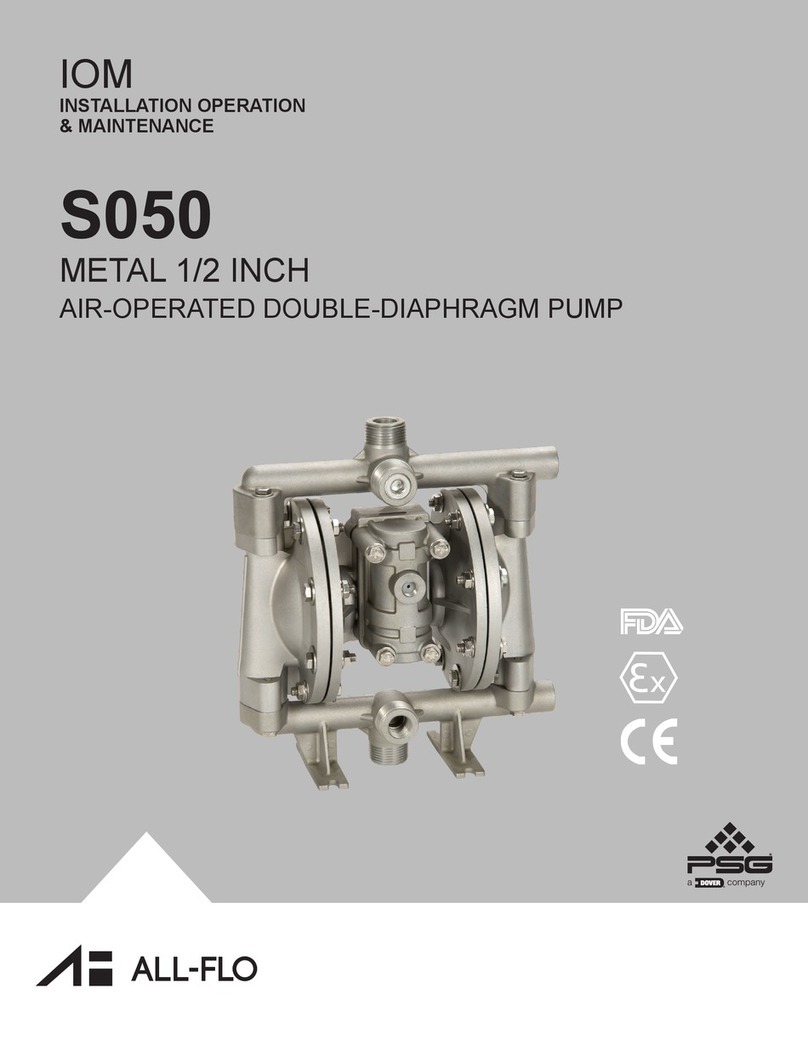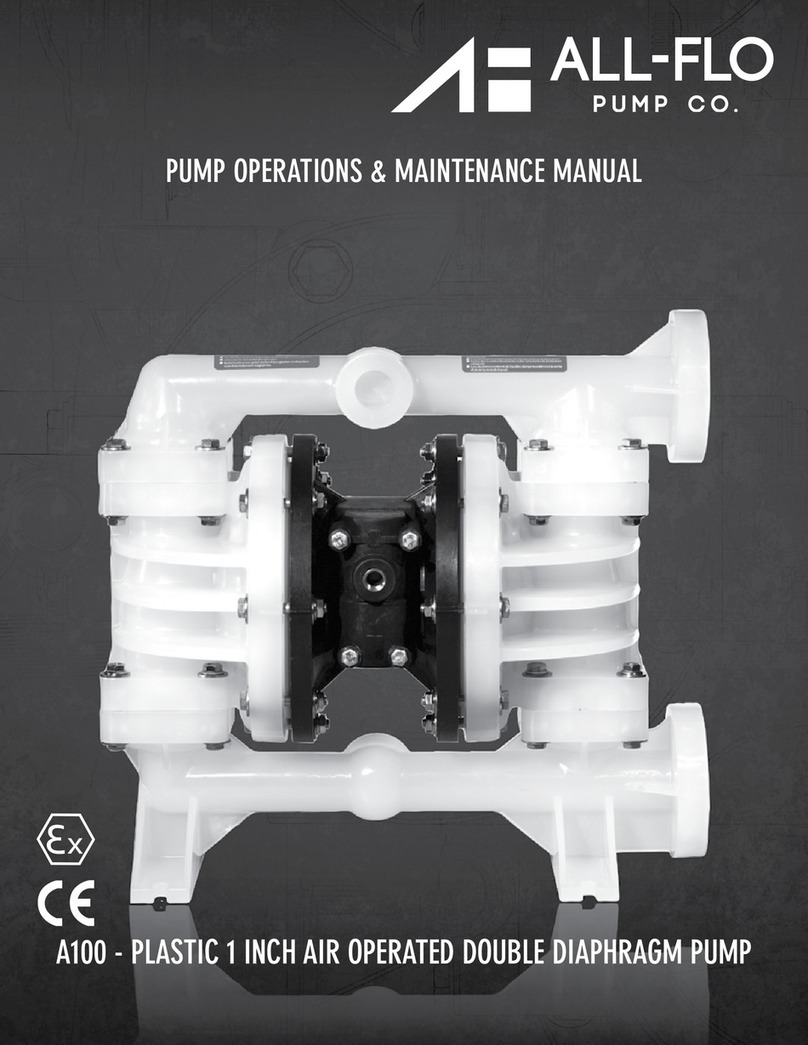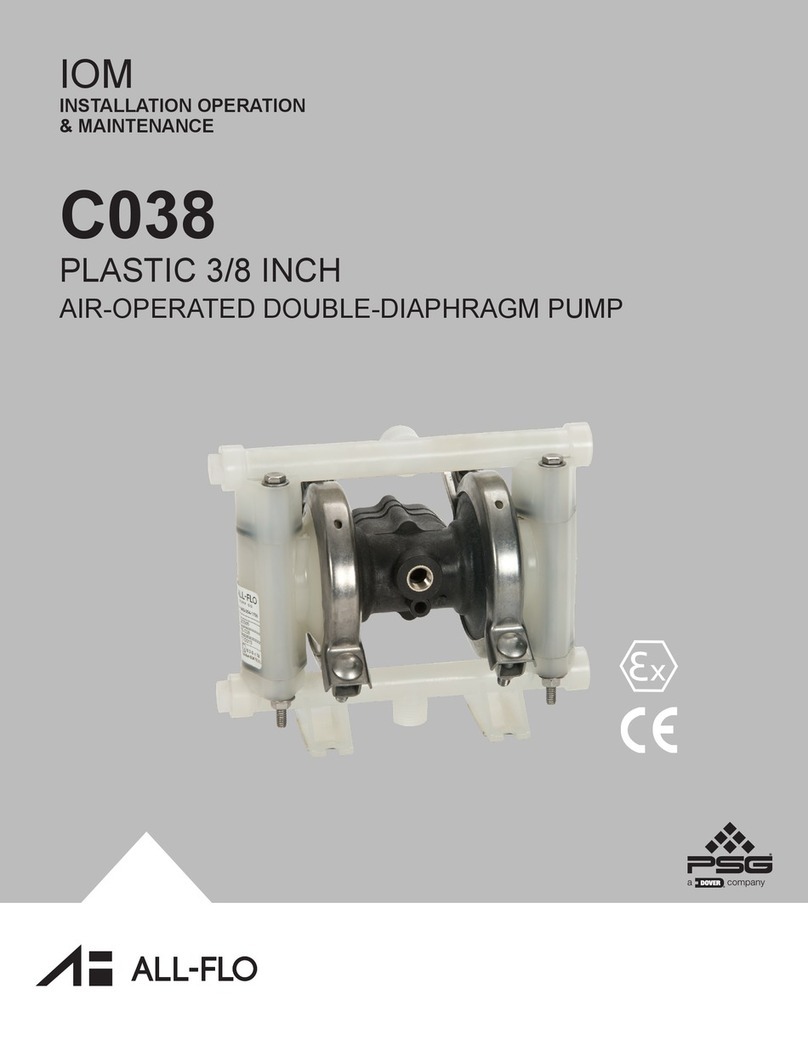
ALF-12080-E-02 All-Flo3
SECTION 1
READ THESE WARNINGS AND SAFETY PRECAUTIONS PRIOR TO
INSTALLATION OR OPERATION. FAILURE TO COMPLY WITH THESE
INSTRUCTIONS COULD RESULT IN PERSONAL INJURY AND OR
PROPERTY DAMAGE. RETAIN THESE INSTRUCTIONS FOR FUTURE
REFERENCE.
CAUTION Always wear safety glasses when operating a pump
to avoid eye injury. If diaphragm rupture occurs, material being pumped
may be forced out of the air exhaust.
CAUTION Do not connect a compressed air source to the
exhaust port of the pump.
CAUTION Do not lubricate air supply.
CAUTION Do not exceed 120 psig (8.3 bar)
air-inlet pressure.
CAUTION Do not exceed 10 psig (0.7 bar)
or 23 ft-H2O suction pressure.
CAUTION The temperature of the process fluid and air
input must be no more than the maximum temperature allowed for the
appropriate non-metallic material. See the list of temperatures below for
each material’s maximum recommended temperature:
Buna-N (Nitrile): 10°F to 180°F (-12°C to 82°C)
Bunalast™: -40°F to 266°F (-40°C to 130°C)
EPDM: -40°F to 280°F (-40°C to 138°C)
FKM: -40°F to 350°F (-40°C to 177°C)
Hytrel®: -20°F to 220°F (-29°C to 104°C)
Nylon: 0°F to 200°F (-18°C to 93°C)
PTFE: 40°F to 220°F (4°C to 104°C)
Polyethylene: 32°F to 158°F (0°C to 70°C)
Polypropylene: 32°F to 180°F (0°C to 82°C)
Polyurethane: 10°F to 150°F (-12°C to 66°C)
PVDF: 0°F to 250°F (-18°C to 121°C)
Santoprene®: -40°F to 225°F (-40°C to 107°C)
Urethane: -65°F to 220°F (-54°C to 104°C)
Temperature limits are solely based upon mechanical stress and certain
chemicals will reduce the maximum operating temperature. The allowable
temperature range for the process fluid is determined by the materials
in contact with the fluid being pumped. Consult a chemical resistance
guide for chemical compatibility and a more precise safe temperature
limit. Always use minimum air pressure when pumping at elevated
temperatures.
CAUTION It is the end user’s responsibility to maintain the
process fluid’s temperature during use.
CAUTION Ensure all wetted components are chemically
compatible with the process fluid and the cleaning fluid.
CAUTIONS — READ FIRST!
WARNING
CAUTION
= Hazards or unsafe practices which
could result in severe personal injury,
death or substantial property damage
= Hazards or unsafe practices which
could result in minor personal injury,
product or property damage.
WARNING Prior to servicing the pump, ensure that the air and
fluid lines are closed and disconnected. While wearing personal protective
equipment, flush, drain and process liquid from the pump in a safe manner.
WARNING Maintenance must not be performed when a
hazardous atmosphere is present.
CAUTION The equipment must be inspected for visible
damage prior to use.
CAUTION Ensure pump is thoroughly cleaned and flushed
prior to installation into a process line.
CAUTION Blow out all compressed air lines in order to
remove any debris, prior to pump installation. Ensure that the muffler is
properly installed prior to pump operation.
CAUTION Ensure air exhaust is piped to atmosphere prior to a
submerged installation.
CAUTION Ensure all hardware is set to correct torque values
prior to operation.
WARNING Pump, valves and all containers must be properly
grounded prior to handling flammable fluids and/or whenever static
electricity is a hazard.
WARNING The Safety Supplement document is a part of the
manual. Please refer to the Safety Supplement document for a complete
list of safety considerations including considerations for safe operation and
maintenance of pumps marked for ATEX environments before starting the
pump.
WARNING This product can expose you to chemicals
including Nickel, Chromium, Cadmium, or Cobalt, which are known
to the State of California to cause cancer and/or birth defects or other
reproductive harm. For more information, go to www.P65Warnings.ca.gov.






































